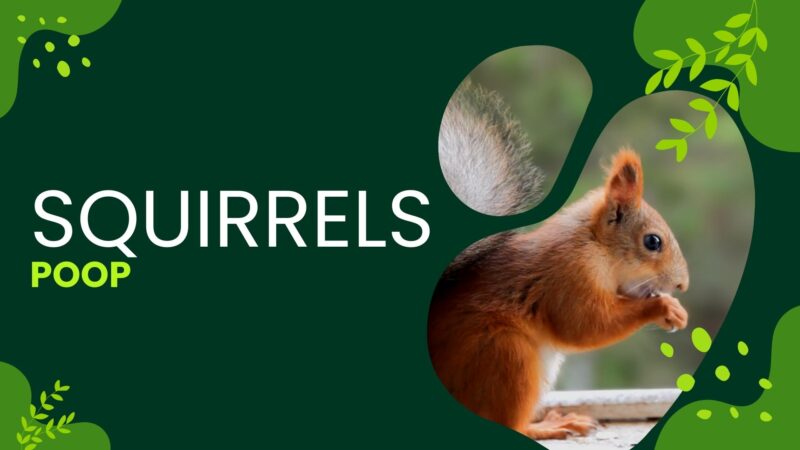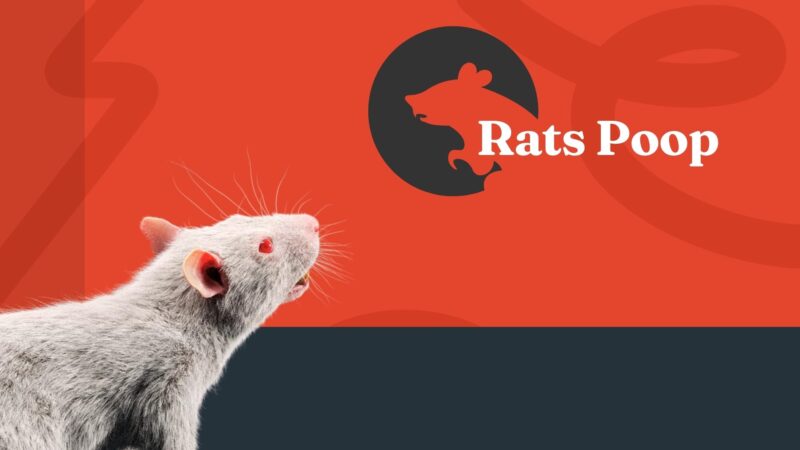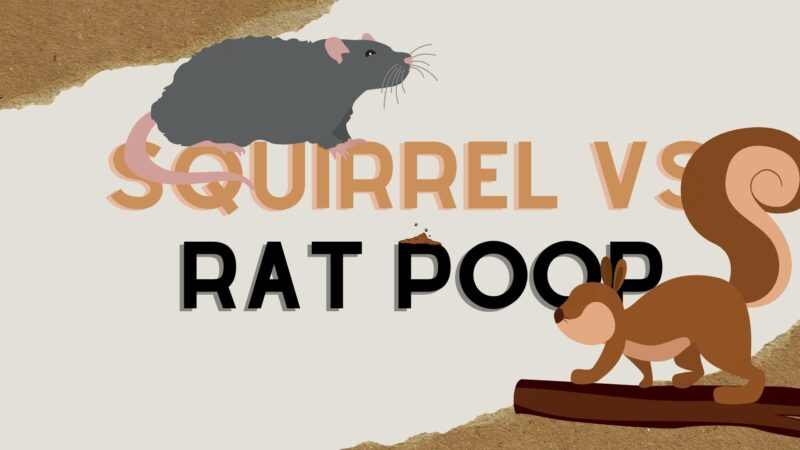Discovering small droppings around your property can be alarming, as it often indicates the presence of unwanted rodent visitors. Two common culprits are squirrels and rats, both capable of causing various issues, from property damage to potential health risks.
To effectively address the situation, it’s crucial to distinguish between squirrel and rat poop. In this article, we will delve into the distinctive characteristics of these rodent droppings, equipping you with the knowledge to identify which critter has made its presence known.
Understanding Squirrels and Their Droppings

Before we dive into differentiating their droppings, let’s take a moment to understand the characteristics of squirrels and their unique waste.
Size Matters: Comparing Squirrel Droppings
One of the primary differences between squirrel and rat poop lies in their size. Squirrel droppings are significantly smaller than rat droppings, usually measuring about ¼ inch in length. The shape of squirrel poop resembles tiny cylinders, and they have rounded edges, giving them a smooth texture.
These agile creatures primarily inhabit trees, and as a result, you’ll often find squirrel droppings in or near trees, particularly around their nests, which are called “dreys.”
Shape and Texture: The Key to Identification
Beyond size, the shape and texture of droppings can provide further clues in differentiating between squirrels and rats.
Squirrel Poop: Squirrel droppings tend to have a consistent thickness throughout their length, contributing to their smooth and uniform appearance. They might remind you of dark chocolate-covered raisins. The color can slightly vary depending on the squirrel’s diet, but in general, it remains within the dark brown to black spectrum.
Decoding the Color Clue
The color of droppings can also offer additional insights into their origin.
Squirrel Poop: As mentioned earlier, squirrel droppings typically have a dark brown or black hue. However, their color can be influenced by their diet. For instance, if squirrels have been munching on berries, their droppings may take on a reddish tint.
Understanding Rats and Their Droppings

Now, let’s shift our focus to rats and explore the unique features of their droppings.
Rat Droppings: Size and Characteristics
In contrast, to squirrel droppings, rat droppings are noticeably larger, ranging from about ½ inch to ¾ inch in length. Their shape is more oblong, with tapered ends, and they might appear somewhat pointy. Rats, being highly adaptive rodents, explore both ground and elevated areas, making their droppings more ubiquitous in various locations.
Rat Droppings: Texture and Form
Unlike squirrel droppings’ uniform appearance, rat droppings exhibit a more irregular shape. They can resemble large grains of rice and often have a slightly bumpy or wrinkled texture. The color of rat droppings is generally dark brown or black.
If you want to learn about proper sanitation methods, check out this valuable resource to deal with rodent feces effectively.
The Color Clues of Rats
Rat droppings maintain a consistent dark brown or black color. However, the freshness of the droppings can sometimes reveal more about the rodents’ recent activity. If you spot moist or glistening droppings, it might indicate that rats have been active in the area recently.
Spotting the Clues: Quantity and Distribution
The quantity and distribution of droppings can provide valuable insights into the extent of the infestation and the rodents’ activity patterns.
Squirrel Droppings’ Locations: Hints from Above
Squirrels are more solitary animals, and their droppings may be scattered in a less concentrated manner. As arboreal creatures, they leave droppings in or near trees, particularly around their nests and favored feeding areas.
For tips on safely removing droppings left by these critters in your attic, follow this helpful guide to differentiate between squirrel and rat feces and determine the appropriate cleaning methods.
Rat Droppings’ Hideouts: A Grounded Approach
Rats, being social animals, tend to live in colonies, which translates to a higher concentration of droppings in specific areas. If you encounter a significant number of droppings in a particular location, it’s likely that rats are using it as a nesting site or a frequent feeding ground.
Fresh or Not? The Age of Droppings
Determining the freshness of the droppings can offer valuable insights into the timeline of the infestation and whether the rodents are still active in the area. Squirrel droppings usually dry out quickly due to their plant-based diet, resulting in a crumbly texture for older droppings.
In contrast, rat droppings being more moist, can retain their freshness for a more extended period.
FAQs
Can I use droppings to track the rodents’ activity patterns?
Yes, the quantity and distribution of droppings can provide valuable insights into the rodents’ activity patterns, helping you identify their preferred locations.
How can I prevent squirrel or rat infestations on my property?
To prevent infestations, ensure that your property is well-maintained, with no entry points for rodents. Secure trash cans, seal gaps in walls, and trim tree branches near your house to discourage rodents from accessing your property.
Can squirrels and rats cause property damage?
Yes, both squirrels and rats can cause property damage by chewing through wires, insulation, and other building materials. They may also damage gardens by eating plants and fruits.
Are squirrel droppings harmful to humans?
While squirrel droppings can carry bacteria and parasites, they are generally less of a health concern compared to rat droppings, which can transmit serious diseases.
How do I safely clean up droppings in my home?
Wear protective gloves and a mask while cleaning up droppings. Use a disinfectant to sanitize the area thoroughly.
Should I try to eliminate the rodents myself?
It is recommended to seek assistance from a professional pest control service, as they have the expertise and proper tools to handle rodent infestations safely and effectively.
Can I use rodent droppings to identify specific species of squirrels or rats?
Identifying specific species based solely on droppings can be challenging. If you need precise identification, it is best to consult a wildlife expert or pest control professional.
What should I do if I find a large concentration of droppings in my home?
If you discover a significant number of droppings in a concentrated area, it might indicate a potential rat infestation. It is advisable to contact a professional pest control service to address the situation promptly.
Conclusion
Distinguishing between squirrel and rat poop is crucial for effective pest management. By considering the size, shape, color, quantity, distribution, freshness, and location of the droppings, you can accurately identify the rodent intruder and take appropriate measures to address the situation.
Curious about the various noises these little creatures produce? Explore this informative piece to distinguish between squirrel and rat droppings while learning about the sounds squirrels make.
Remember, if you are unsure about the type of rodent infestation you are dealing with, it is always best to seek assistance from a professional pest control service to ensure the problem is handled safely and efficiently. Timely identification is the key to effective pest management and maintaining a healthy environment for your home or business.
Related Posts:
- What Does Squirrel Poop Look Like? - Warning-Contains Nuts
- Texas Rat Snake Facts, Diet, Habitat - The Lone…
- What Does Frog Poop Look Like? - Analyzing the Appearance
- 10 Arctic Ground Squirrel Facts, Pictures & Video:…
- Difference Between Male and Female Bald Eagles:…
- What Is the Difference Between a Coyote and a Wolf?…








